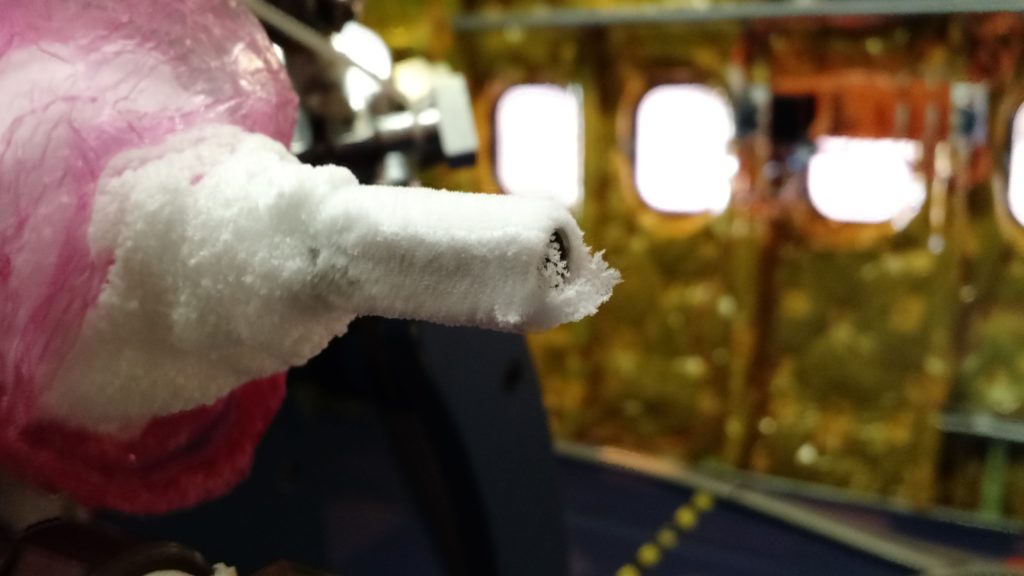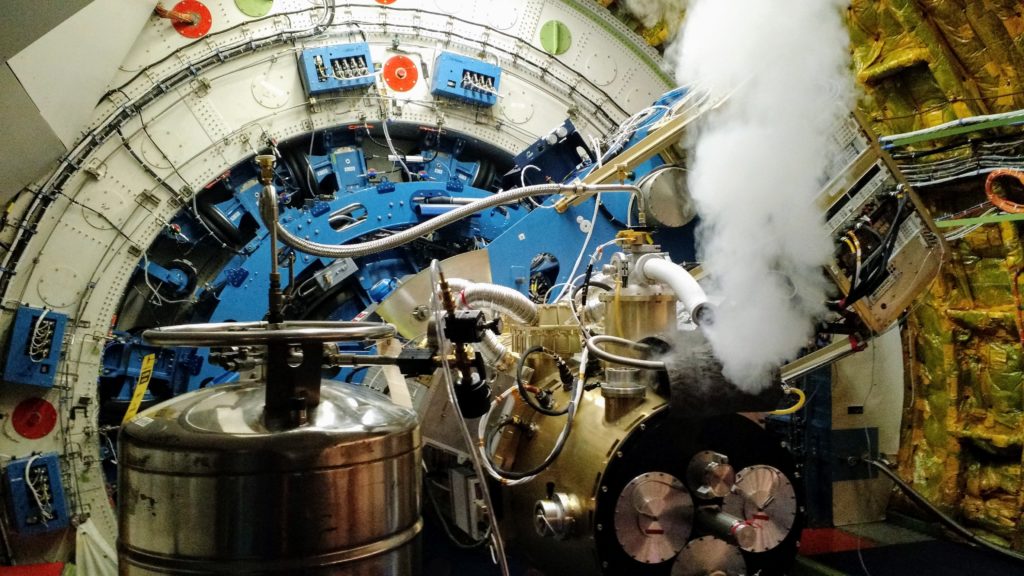The Old Way of Cooling Instruments
Early on, astronomical instruments and the electronic detectors inside of them were kept cold using dry ice (-79 C or -110 F) or even colder options like liquid nitrogen (-196 C or -320 F) or liquid helium (-243 C or -406 F). Those temperatures are nice and cold, but all of those are consumables – they boil and turn back into a gas over time, even in a well-insulated system. That means you have to refill them on some interval, usually at least once a day. If you’re unlucky, you’ll end up having to refill it in the middle of the night, and I can tell you from experience that it’s no fun to do this in the winter at 3:00AM! In addition to the refills, you have to be very careful to design your instrument to avoid places where the ice plugs can form, because pressure will build up behind that plug until it escapes destructively! We have phased out these types of systems over the years.
The Use of Liquid Nitrogen

Here is an image from my time at Stratospheric Observatory for Infrared Astronomy (SOFIA), a Boeing 747SP aircraft modified to carry a 2.7 meter reflecting telescope.
Ted Dunham’s HIPO instrument used liquid nitrogen to keep its detectors cold. HIPO could be co-mounted with the UCLA FLITECAM instrument, and it used both liquid nitrogen and liquid helium to keep its near-infrared detector cold and optimally sensitive.
I took this just after I filled FLITECAM with liquid nitrogen and liquid helium on the plane – as the gas leaves the instrument it’s still quite cold, so frost forms.
The Use of Liquid Helium
I took this while the Yerkes/JPL HAWC+ instrument was being filled with liquid helium during a SOFIA flight series. The big white plume is actually liquid helium boiling and becoming a gas again.
As liquid helium in the instrument runs out it warms up slightly, so when you fill it again things are a bit warmer and that causes the larger helium exhaust plume.
To keep things flowing well during refills we would switch to the larger frost-covered tube shown in the picture, and after the fill was complete we would switch back to a smaller exhaust line.
